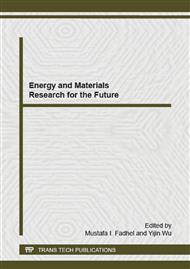p.43
p.50
p.55
p.63
p.69
p.75
p.79
p.84
p.93
Inhibition Activities of Sorbitol on the Corrosion of Steel Rebar
Abstract:
The corrosion inhibition activities of sorbitol on the corrosion of steel rebar were studied via potentialdynamic polarization, electrochemical impendence spectroscopy (EIS) techniques as well as the Fourier transform infrared spectroscopy (FTIR) in simulated concrete pore solution. In order to determine its corrosion inhibition effect in the concrete structure, concrete specimens with steel rebar inside were prepared and wet /dry cycles method was used to simulate the service environment of steel rebar in marine region as well as to accelerate rebar corrosion. The inhibition performances of sorbitol were investigated by half cell potential and corrosion current density measurements. The results indicate that sorbitol can effectively inhibit the corrosion of steel rebar both in simulated system and concrete structure. Its inhibition mechanism involves a chelating effect of the molecule with the iron ions and a protective film formed on the metal surface.
Info:
Periodical:
Pages:
69-74
Citation:
Online since:
February 2015
Authors:
Keywords:
Price:
Сopyright:
© 2015 Trans Tech Publications Ltd. All Rights Reserved
Share:
Citation:


